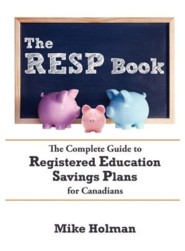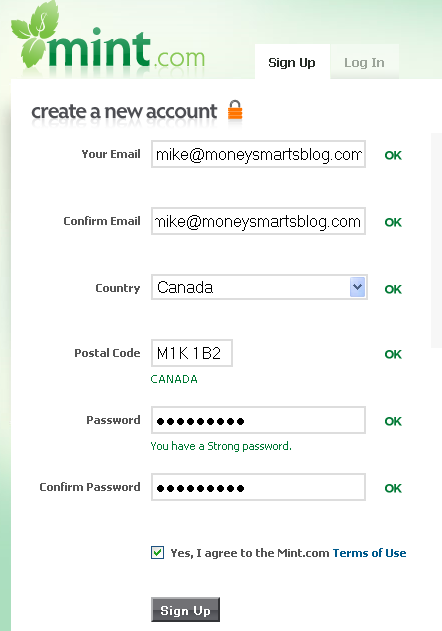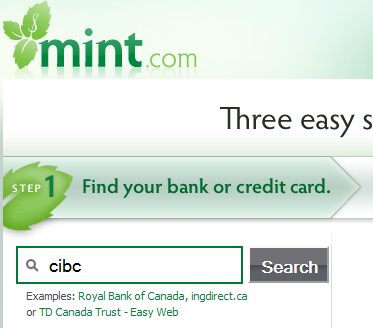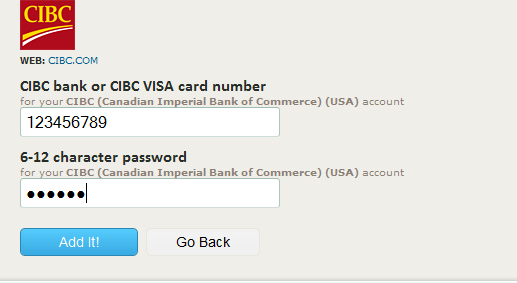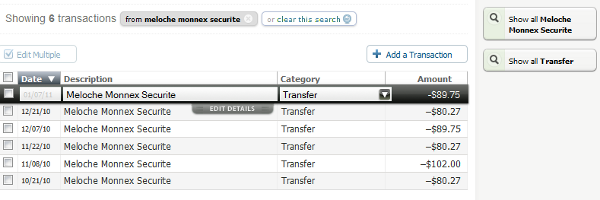I’ve been running my business as a sole proprietorship for about four years. Any cheques I’ve received have always been made out to my name. A personal PC Financial chequing account has served admirably as my “business” account, which gave me a place to deposit the cheques.
This year was a bit different – I started a publishing company, so that I could use Lightning Source as the printer for my book. As a result, all the royalty cheques are made out to “Money Smarts Publishing”. Since I can’t deposit those cheques in my personal PC Financial account, I had to open up a business account.
After doing a bit of research, I determined that most business checking accounts are quite expensive – in and around $10 per month or more in fees. In my case, I just need an account where can I deposit one or two cheques per month and do a withdrawal once a quarter.
I found out that HSBC (Hong Kong and Shanghai Banking Corporation) offers a free business checking account. It also handles US$, which is perfect since my publishing cheques are all US$.
Free has a price
This account isn’t for everyone – it has a limited number of transactions per month (20) and if you order cheques, they are very expensive. One workaround is to order cheques from a third-party cheque printer such as ASAP Cheques . I haven’t ordered any cheques yet, but I plan to.
Other major limitations are a lack of ATMs and charges on any EFTs.
This bank account is perfect for my business, but it will not suit the needs for many other businesses. Make sure you understand the limitations before signing up.
Another drawback to this account is the lengthy account set up timeline – it will likely take 4-6 weeks to get the account fully activated.
The basic steps to set up the account were as follows:
- Fill out online app at HSBC.ca
- They phoned me about a week later.
- We played phone tag for about two weeks (this was partly my fault).
- I set up an appointment to meet with a bank rep to sign a few documents. The appointment was very fast – only about five minutes.
Items you need for the appointment:
- Two pieces of I.D. – I showed my drivers license and a visa card.
- Ontario master business license as well as the federal license and business number.
About a week after the appointment, I got a bank card in the mail along with a “welcome” package with instructions on setting up the online login.
Setting up the bank card pin was tough – you have to call them and they take a LONG time to answer the phone. Once they activate the card, you get one hour to get to a HSBC ATM to set your own password. Given that all the HSBC ATMs in Toronto seem to be downtown, I would imagine that someone living out in Ajax would have do an Amazing-Race style dash to the city core. 🙂
Unfortunately, I wasn’t aware that I had to go to a proper HSBC ATM, not a no-name one, so it didn’t work for me. I phoned again to clarify, and she also told me I can get the pin reset in a branch which is what I did. I deposited some cheques at the same time.
I also found out that you can’t deposit US$ cheques in ATMs, so the whole pin number is a moot point anyways. 🙂
Setting up the online banking was a small hassle, but I think that’s true of all banks. One unique feature about HSBC is that they send you an electronic token which you have to use to login to your online account. This is good from a security point of view, but bad for convenience unless you can carry your token around with you (and not lose it).
Any other business owners out there? Where do you have your business account? Are you ok with the fees and service they offer?
